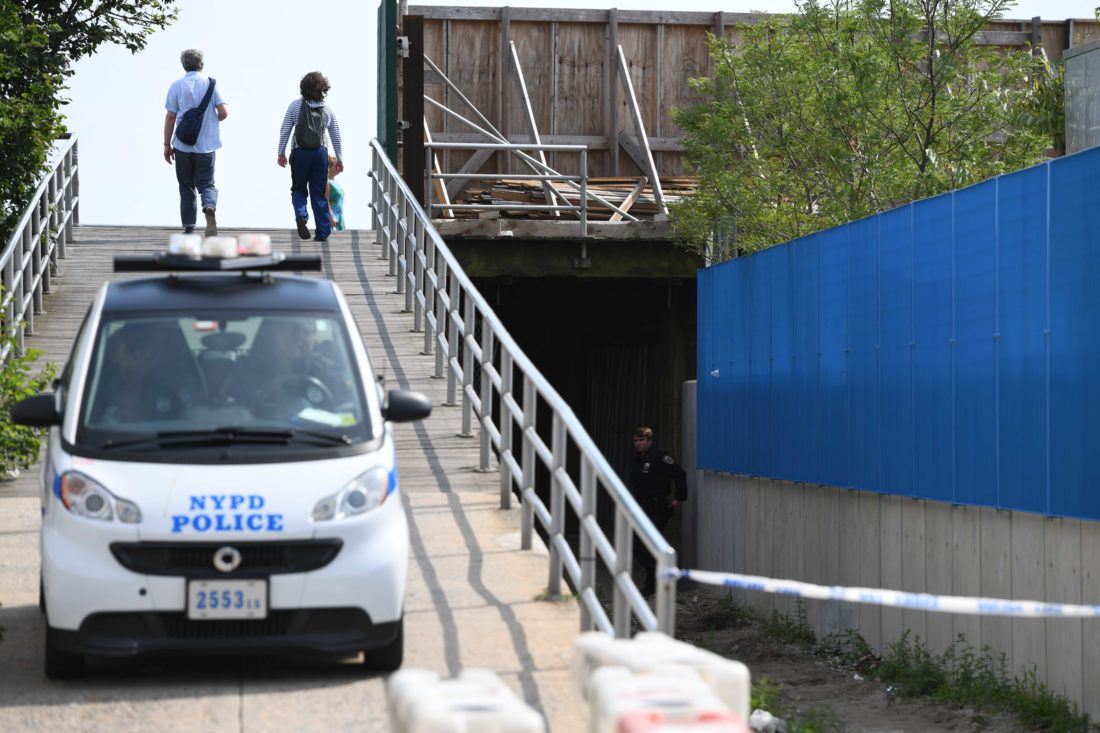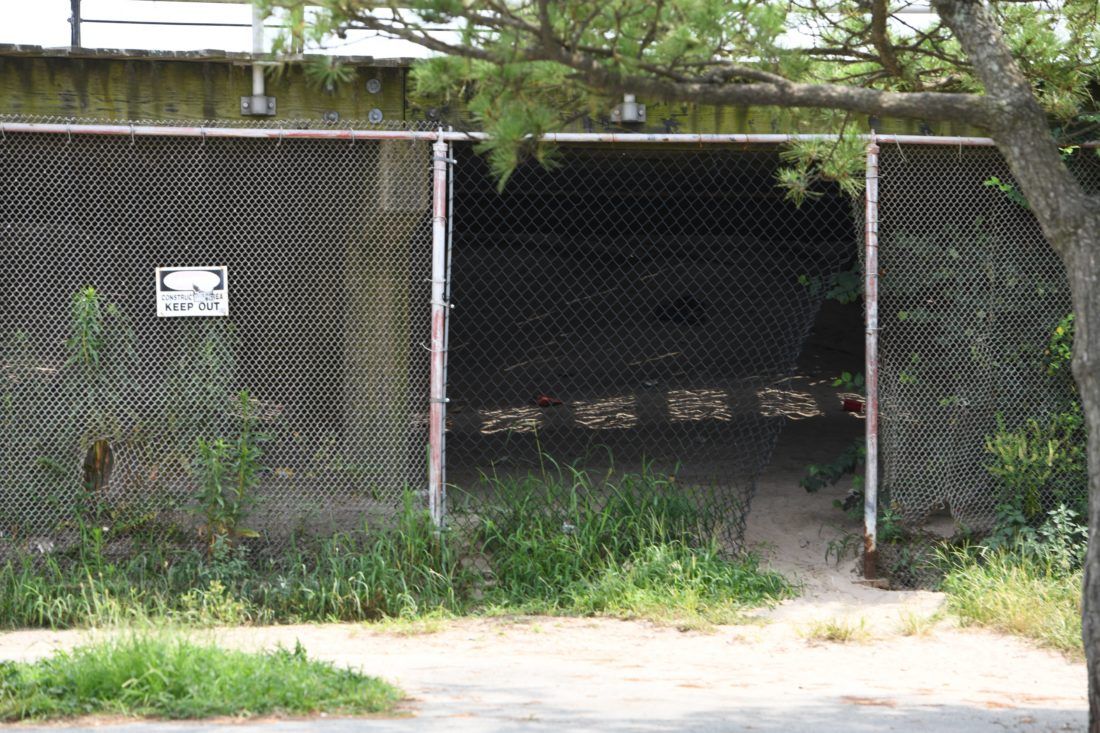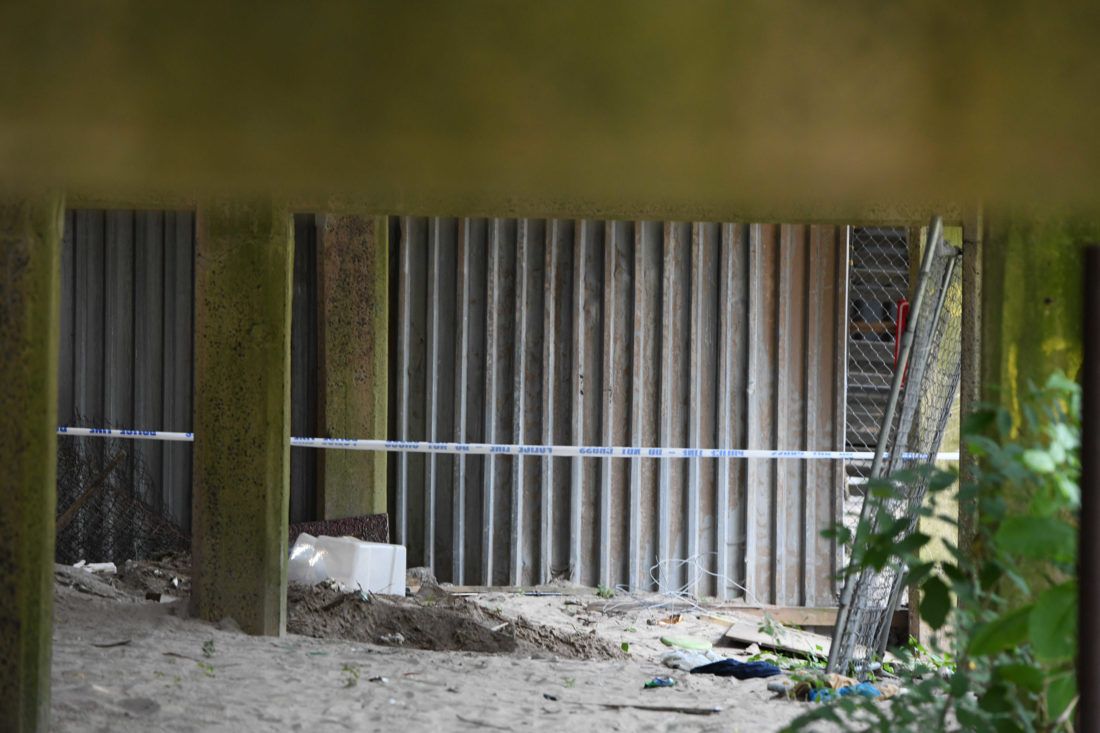Man Found Dead Under Boardwalk – Gate Underneath An Ongoing Issue

[UPDATED: Wednesday, August 7 at 2:15pm] The NYC Parks Department provided the following statement regarding the gate beneath the Coney Island Boardwalk: “Keeping the underside of the boardwalk safe and secure is a priority for us, but in this instance, the fencing was illegally breached. We conduct weekly inspections of the fencing below the boardwalk, and in conjunction with Parks Enforcement Patrol and the NYPD, we will continue to be vigilant about preventing and addressing any breaches.”
CONEY ISLAND – The body of a man in his 30’s was found lying in the sand under the Coney Island Boardwalk at West 5th Street on Tuesday, causing the community to again question whether there is anything that can be done to keep the homeless from cutting open the fences and setting up camp.

Despite efforts by the NYC Parks Department to prevent illegal entry under the Boardwalk, homeless and other vagrants have been cutting the chain link fence in various locations, endangering the vaunted wooden deck. Piles of trash left by the individuals have caused massive fires that have damaged the wooden deck and local businesses, and endangers the public. Occasionally, people are found with drug overdoses and sometimes dead from various causes.
Police from the 60th Precinct were alerted to the presence of the dead man at about 3 p.m. on August 6. Officers entered the underside of the boardwalk, just outside the handball courts off Surf Avenue, through one of several holes in the fence and found a man dead in the sand. The location is right next to the New York Aquarium. Police officials said there did not seem to be foul play, but the cause of death will be determined by the Medical Examiner.

“They cut holes in the fences as quickly as the Parks Department closes them up,” said Jimmy Williams, an avid handball player who frequents the area. “The homeless live under there and they just keep cutting the fence. There are holes all over the place.”
Another man who wouldn’t be identified said he sometimes brings the homeless food and drinks. He said, “these people have no place to go so they stay under the boardwalk. A lot of these people come from out of town and then set up camp under there.”
Community Board 13 District Manager Eddie Mark said solutions have eluded the Parks Department. “Right now, we don’t know what can be done, but we are going to try to work with the Parks Department to try to find solutions to this continuing problem,” Mark said. “The Parks Department does close up the fences, but they can’t be everywhere at once. We will work with Parks to find answers.”
The Parks Department had no comment on this story by press time.

On April 14, a two-alarm fire ripped through a Brighton Beach restaurant from underneath the boardwalk, injuring one firefighter and causing heavy damage to the establishment and to the wooden planks, fire officials said.
Restaurant owners and residents blamed the city, notably the Parks Department and Community Board 13, for failing to keep homeless people from living under the Boardwalk and for the inadequate removal of trash accumulating under it.
Officials admit that this was not the first fire of its type. Past fires had caused serious damage to the boardwalk restaurants several times over the years. One particular fire about 10 years ago, caused damage to the restaurants on Brighton 6th Street and spread to apartments above, injuring dozens.
The most famous Coney Island Boardwalk fire occurred in 1932, when a fire under the boardwalk caused $5 million in damage (much more in today’s dollars adjusted for inflation) before it was finally controlled by one of the largest contingents of fire fighters and fire apparatus ever summoned for a summer resort at the time.
The fire involved 1,000 feet of the boardwalk; 37 brick and frame dwellings of more than three families; 51 dwellings of not more than two families; 34 buildings or structures containing stores or concessions; 11 bathing pavilions; one hotel; two auto service stations; and one laundry, making a total of 137 premises. There were 49 stores involved in the 137 buildings: 8 candy, cigars and stationery, etc.; 2 shooting galleries; 8 restaurants; 2 auction bazaars; 2 milk stands; 5 side shows; 5 groceries; 2 butchers; 2 soft drink stands; 2 shoe repairers; 1 bowling alley; 4 real estate and law offices; 1 drug store; 1 laundry; 1 tailor; 1 barber; 1 novelty shop; and 1 artist’s studio.




